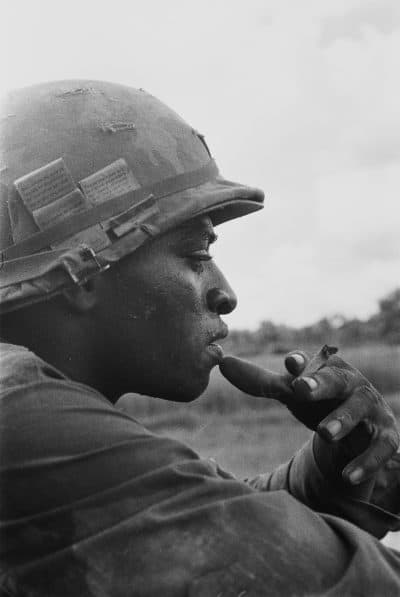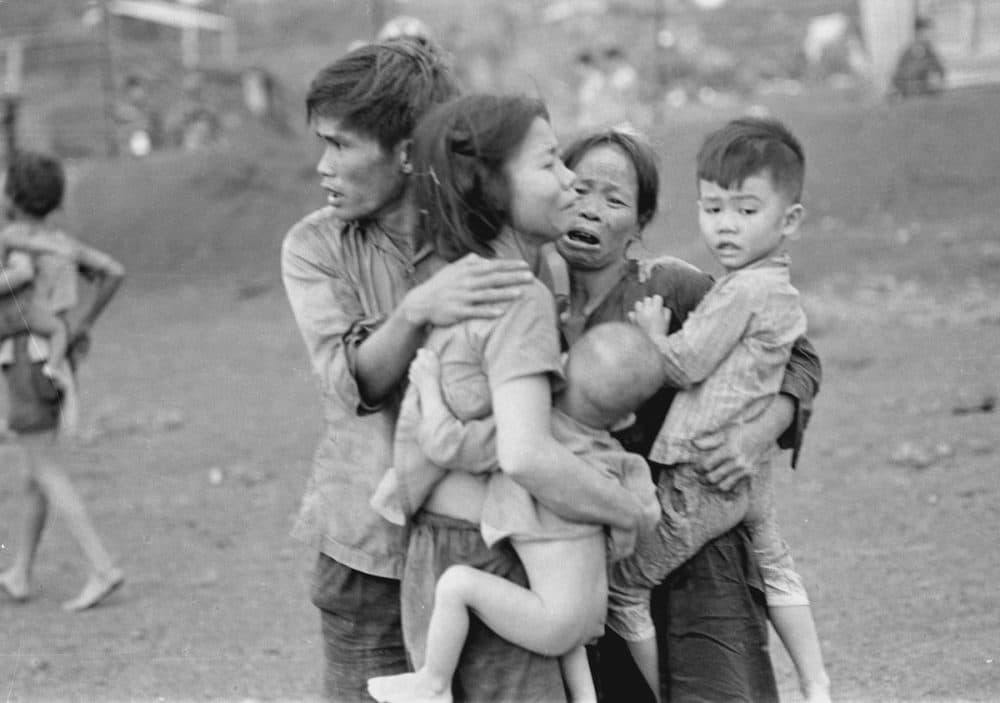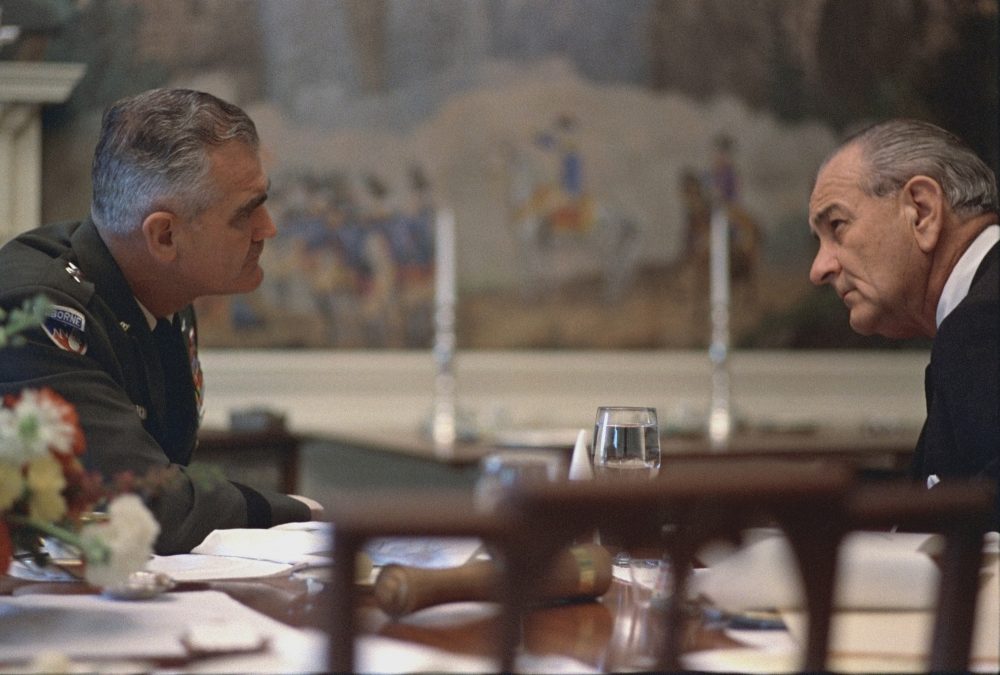Advertisement
Review
Ken Burns' 'Vietnam War' Brilliantly Explores The Tragedy Of 'What Happened? What Happened?'
Resume
Let’s not mince words. Ken Burns is a national treasure and his megaseries with creative partner Lynn Novick, "The Vietnam War," only furthers the sense that he is not only an essential historian but an essential artist as well, a Shakespeare of the documentary.
Hyperbole, particularly given some of the criticisms leveled at his films? You know — they’re formulaic, focus too much on battles (“The Civil War”) or rely too heavily on a narrow point of view (like Wynton Marsalis’ strict definition of the genre in “Jazz”).
To focus on matters like that in those films and particularly in “The Vietnam War” — and there are such matters — is missing the forest for the trees. It’s Burns’ ability to combine the historian’s insistence on real facts instead of alt-facts with the artist’s passion to let the story go wherever it takes him that makes Burns the great chronicler he is, and that makes his work unmissable.
In this case where it takes Burns and Novick is to hell and back. In a way, Burns comes full circle, back to his first epic in 1990, “The Civil War,” because the unmistakable take-away when you compare both series to current events is that we are still waging both wars as a nation. The fight over statues and flags is evidence enough of the Civil War still raging and every election since the end of the war in 1975 has invoked Vietnam to some extent. But beyond that, watching “The Vietnam War,” transposed with those same current events, makes it evident that the war still permeates the nation’s soul.

“The Vietnam War,” which begins its 18-hour 10-part odyssey at 8 p.m. Sunday, Sept. 17, on PBS and Channel 2, is the stuff of Shakespearean tragedy. You keep wanting to call out to every president as he contemplates escalation “Don’t do it,” as you might want to tell Lear which of his daughters to listen to. The tragedy here is even greater than in the Civil War. The difference in the wars, and the difference in the Burns’ series, is that the Civil War seemed inevitable; the Vietnam War could have been stopped by five different post-FDR presidents had they not bowed to a variety of pressures even, in many cases, while suspecting that they were moving in the wrong direction.
The other take-away from the series, written by Geoffrey C. Ward, is that this was a war that did not have to be fought, and should not have been. Many conservatives have always felt that the war could have been won had the United States simply poured more troops into the fire. If “The Vietnam War” doesn’t prove the fallacy of that argument, I don’t know what else could at this point.
Which is not to say that “Vietnam” is a polemic — it is anything but. Burns and Novick really do try to walk a mile in all their characters’ shoes. They understand why that succession of presidents, from Truman onward, were afraid of appearing soft on Communism. If, in the end, we conclude that was a mark of cowardice rather than strength, they leave it to us to arrive at that conclusion.
The moral center of “The Vietnam War” is not the antiwar protesters, and it's certainly not any of the politicians who kept the war going. It's the soldiers, from Arizona’s John McCain to local veterans — Roger Harris, John Kerry, Thomas Vallely and Tim O'Brien. There is no shying away from how the Vietnamese dealt with American prisoners of war and Vietnamese dissidents. But it's the soldiers who are most in need, at this point, of making sense of Vietnam and they are all painfully articulate in the series. Karl Marlantes, a former Marine, opens the discussion by talking about how we'd like to think this isn't affecting us: "It's like living with an alcoholic father. Sshh, we don't talk about that. ... It's only been very recently that the baby boomers are finally saying 'What happened? What happened?' "
There is a major stylistic difference, though, in how Burns uses the Vietnam veterans and how he used the Civil War casualties. That series was famous for what Mac users came to know as Ken Burns Effect, the panning in and out of photos, often overlaid with elegiac music.
While there’s plenty of music in “Vietnam” — of course — the interviews with soldiers are somber, richly-framed stories of expectations, dashed hopes, battlefield recollections (that are traumatic just to listen to), love of friends, hatred of the enemy, atrocities and war crimes. Burns only interviews participants, whether soldiers, antiwar protesters, reporters or politicians.
The interviews are often juxtaposed with military battles, many of them of the Little Big Horn variety. Americans are often visibly shocked as they recall the ferocity and sheer number of the South (Viet Cong) and North Vietnamese they were fighting; the fact that they were treated as invaders rather than liberators; the women and children they were displacing (or worse) as they burned down villages as part of “pacification” practices. Even the successes were failures in public perception, such as the Tet Offensive. The right has always sought to portray Tet as an example of media bias, in light of how the United States and South Vietnamese government forces actually repelled the North Vietnamese and Viet Cong.
Tet was indeed terrible for the North, says "The Vietnam War," and the atrocities piled up by the Communists on their way out of Hue were among the most nauseating of the war. Still, when the Vietnamese were willing to lose 10 or more people for every American killed, what price victory? As one special forces fighter says, “We as Americans should have understood the desire of the Vietnamese to have their own country. We did the same to the Brits.”
These are emotional stories, but they are also advancing the narrative toward one grisly outcome after another. They are the stories of courageous men whose leaders let them down while lying to the American people. As one vet says, “We were actually the last generation to believe our leaders wouldn’t lie to us.”

When other television services, and even movies, have turned to Vietnam it has almost always been from an American perspective. Burns doesn’t settle for that easy way out. “The Vietnam War” is perhaps even more riveting when it shines a light on what’s happening in North Vietnam, particularly the power struggle between the nationalistic leader, Ho Chi Minh, and his more ruthless general secretary, Le Duan, who eventually won control while Ho stayed on as the nominal leader. The Vietnamese lives lost are accounted for, and not just in sterile body counts.
Ho was supported by Franklin Roosevelt and the OSS, the CIA’s forerunner, as he fought against the Japanese invaders in Vietnam, but Harry Truman reversed that, supporting the French colonialists against Ho’s nationalist communists, beginning the tragic fall down the anti-Communist rabbit hole. A Massachusetts senator named John Kennedy was opposed as Dwight Eisenhower raised the ante further, from Truman’s $30 million in aid to the French to $80 million. Kennedy, of course, would escalate the war further once he became president and then … Lyndon Johnson.

LBJ talks of looking to “kick butt” and not being the one who lost, of becoming impressed with a Vietnamese dictator, Nguyễn Cao Kỳ, because he knew how to drink and flirt with women. Talk about a tragic figure. Johnson was a man who in 1964 seemed destined to be one of America’s greatest presidents, only to see the Great Society downsized by one bad decision after another in Vietnam. He refused to listen to any voice of reason that disagreed with him and his inner circle. When one of his leading hawks, Robert McNamara, started voicing doubts, McNamara was out. Ultimately, of course, it was the country’s tragedy, not just LBJ’s.
Johnson was convinced that Richard Nixon committed treason by subverting the peace talks before the 1968 election. It will, of course, not be the last nefarious action by Nixon seen in "The Vietnam War."
Both Kennedy and Johnson supported a series of dictators. As Leslie Gelb, a journalist who served at the time in the Pentagon says, “The war began for us when we would become the partner, I would say the victim, of [Ngo Dinh] Diem.” (Diem was prime minister of South Vietnam when Kennedy was president, seemingly as anti-Buddhist as he was anti-Communist.)
Diem was not the most corrupt politician America backed. Kỳ said that what Vietnam needed was “four or five Hitlers.”
With Burns, even the predictable elements are artful, from Peter Coyote’s raspy, mournful narration to the impressive soundtrack of Bob Dylan, the Rolling Stones and the new music scored by Trent Reznor, Atticus Ross and the Silk Road Project with Yo-Yo Ma.
I don’t know that “The Vietnam War” will heal America’s wounds any more than “The Civil War” did, although all the tears I suppressed during the first nine episodes came gushing out in the powerhouse Episode 10 finale. In any event, it's not the job for historians or artists to heal wounds. Their job is to make us face facts and see the world in a different way.
A friend asked if I really wanted to revisit what happened, particularly for 18 hours. It’s not easy and it’s certainly not fun, but Ken Burns and Lynn Novick know how to make history dramatic, how to make television riveting, and how to tell the country’s story in a way that really defines what American exceptionalism is all about.
"The Vietnam War" megaseries beings Sunday, Sept. 17 on PBS.
This article was originally published on September 15, 2017.
This segment aired on September 18, 2017.

